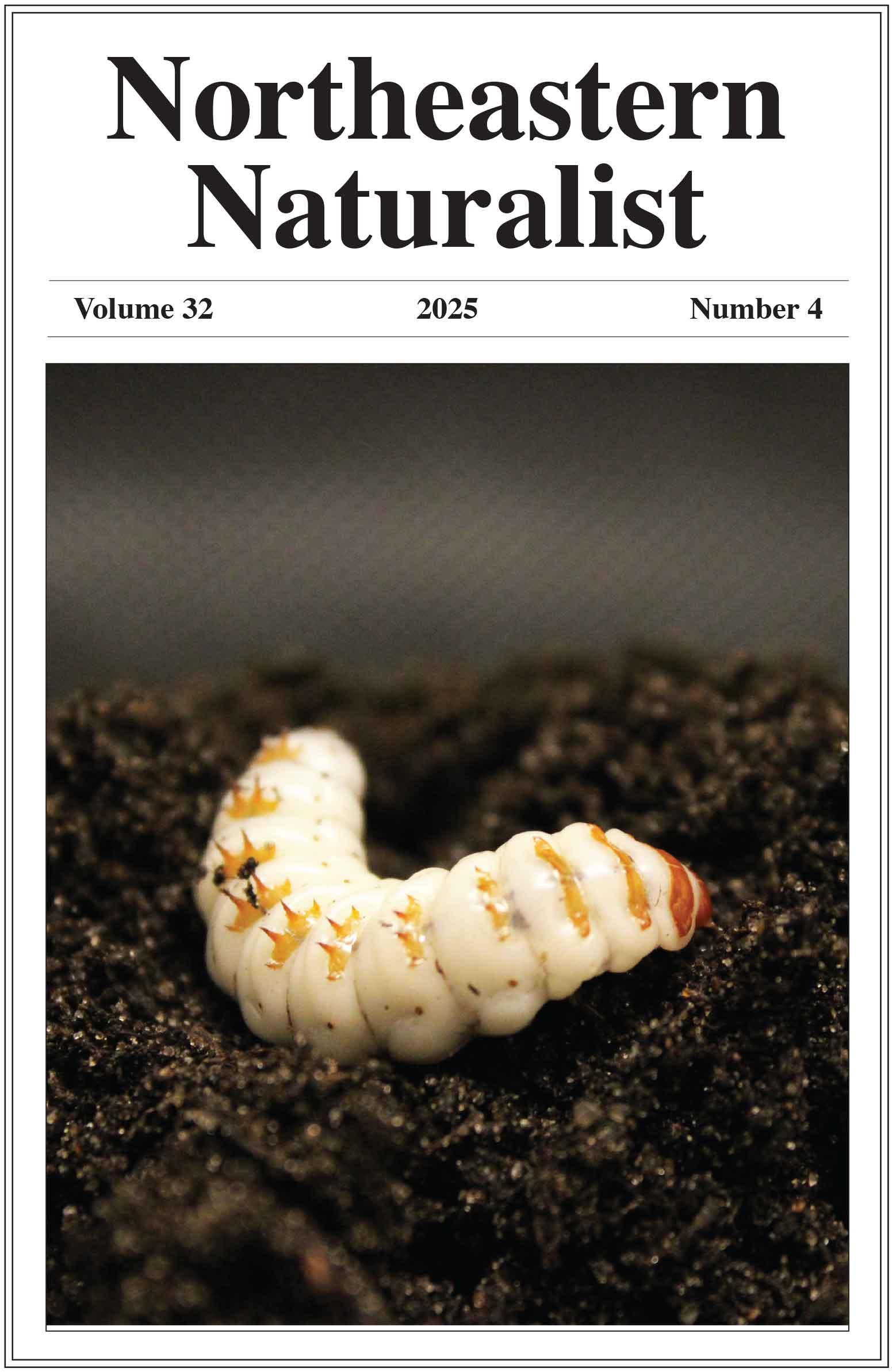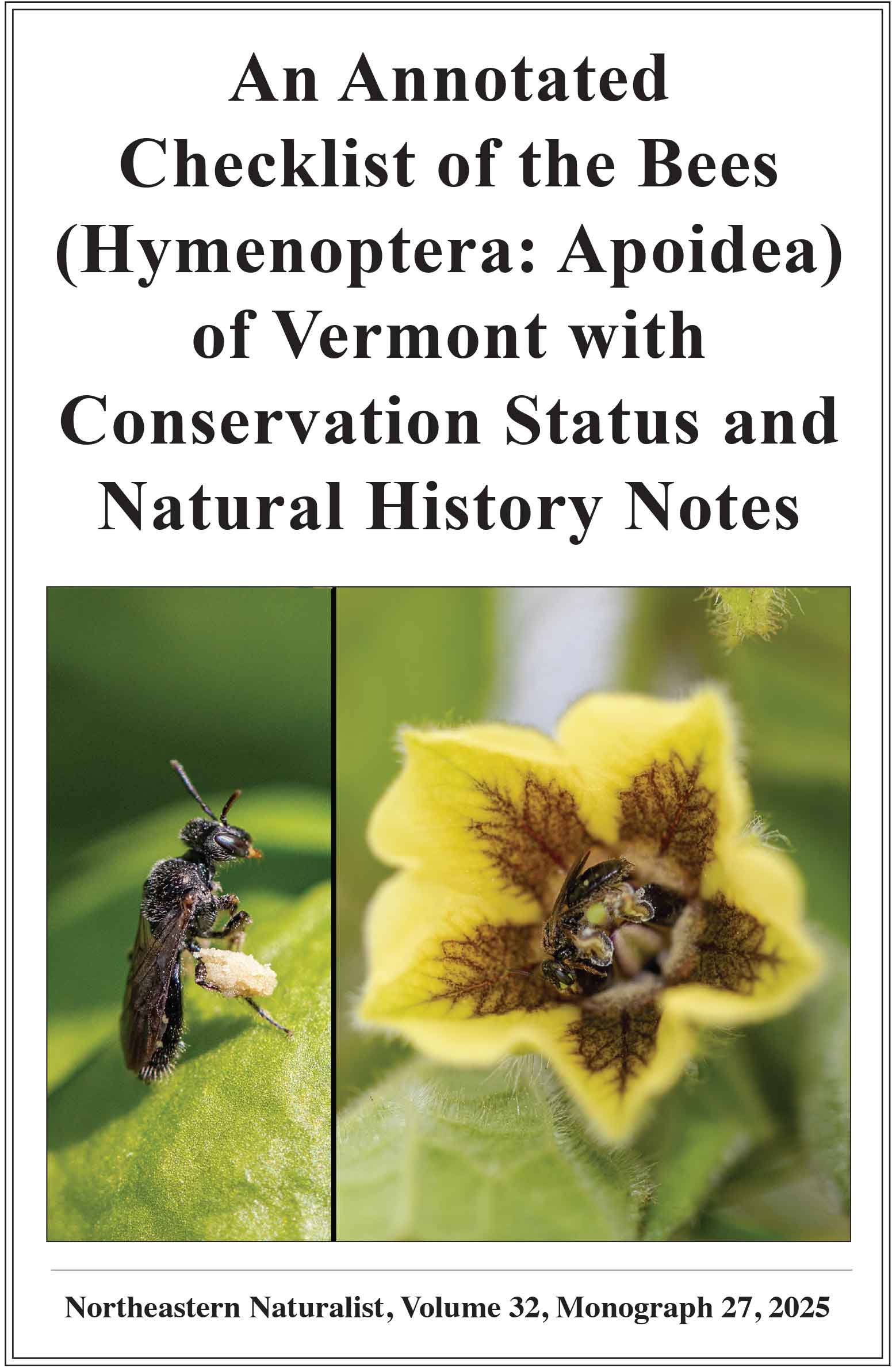Radiotelemetry Study of 16 Male Terrapene nelsoni klauberi (Northern Sierra Box Turtle) in a 30-hectare Study Site of Pine–Oak Forest in Southeast Sonora, Mexico
Taggert G. Butterfield1,*, Rodrigo Macip-Ríos2, Alejandra Monsiváis-Molina1, and Felix García-Caballero1
1Estudiantes Conservando la Naturaleza, Alamos, Sonora, México. 2ENES Morelia, Universidad Nacional Autónoma de México, Morelia, Michoacán, México. *Corresponding author.
Northeastern Naturalist, Volume 31, Special Issue 12: T136–T150
First published early online: 8 March 2025
Abstract
We used radiotelemetry to study the movements of 16 male Terrapene nelsoni klauberi (Northern Sierra Box Turtle) that varied in age, with 6 males being classified as “young” due to the having growth rings on their plastron that could be counted and 10 as “old” males that had growth rings that were eroded away and could no longer be counted. We conducted this study at varying intervals from 2018 to 2022 in a 30-ha field site dominated by Pinus (pine)–Quercus (oak) forest. We found that older male Northern Sierra Box Turtles have significantly wider heads, occupy smaller home ranges, and exhibit less overlap with other older males compared with younger males. Distance between relocations was correlated to season, but not age, with individuals moving significantly more during the wet season. Male Northern Sierra Box Turtles are active during the 4-month wet season (July–October), with the most daily activity occurring in the morning then decreasing throughout the day. Northern Sierra Box Turtles used rock shelters to take refuge. Their diet consisted of fungi, beetles, and plants. There were 2 prominent resources for beetles: ant middens and cow dung. The consumption of high-energy resources such as beetles that are clumped at resources like ant middens or cow dung may lead to older Northern Sierra Box Turtles having larger heads, and small home ranges. Higher crushing force is needed to consume beetles, and living in a small home range with high-energy resources may increase survival and encounters with mates.
![]() Download Full-text pdf (Accessible only to subscribers. To subscribe click here.)
Download Full-text pdf (Accessible only to subscribers. To subscribe click here.)
Access Journal Content
Open access browsing of table of contents and abstract pages. Full text pdfs available for download for subscribers.
Issue-in-Progress: Vol. 33(1) ... early view
Check out NENA's latest monograph and Special Issue:













 The Northeastern Naturalist is a peer-reviewed journal that covers all aspects of natural history within northeastern North America. We welcome research articles, summary review papers, and observational notes.
The Northeastern Naturalist is a peer-reviewed journal that covers all aspects of natural history within northeastern North America. We welcome research articles, summary review papers, and observational notes.